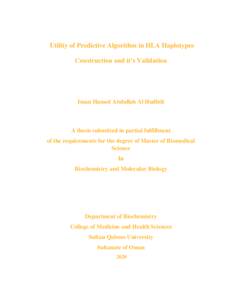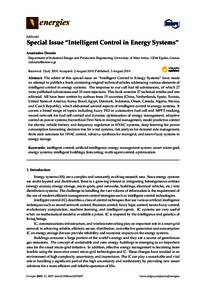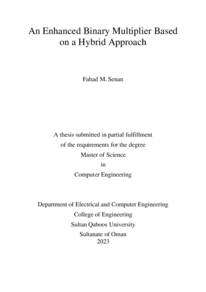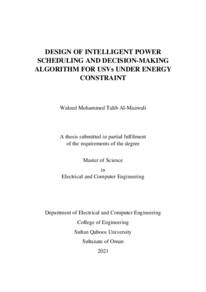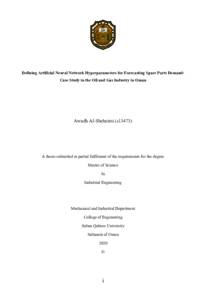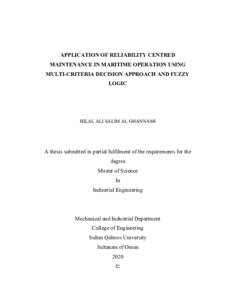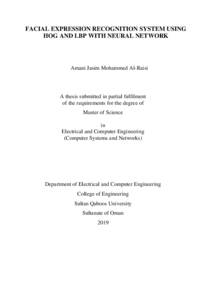Document
Utility of predictive algorithm in HLA haplotypes construction and it's validation.
Publisher
Sultan Qaboos University.
Gregorian
2020
Language
English
English abstract
Introduction: Variation in Human leukocytes antigen (HLA) alleles and haplotypes
distribution in a population are helpful for the analysis of the origin, migration, and degree
of admixture. It also provides data to study disease association and to match individuals
for solid organ and bone marrow transplantation. Current data on HLA alleles and
haplotype distribution in Oman are based on small sample size or missing some HLA loci.
To construct HLA haplotype for an individual, a family pedigree data and HLA typing are
needed which is time-consuming and costly. Using predictive models in haplotype
construction saves time and money, as a haplotype could be inferred from typing a few
HLA informative loci. Aim: The study aims to estimate HLA alleles and 5-loci haplotypes
distribution in the Omani population using a large sample size and validate maximum
likelihood estimation-expectation maximization (MLE-EM) algorithm for haplotype
construction. Method: We analyzed 2950 patients' samples with Omani nationality who
were HLA typed in HLA laboratory at SQUH between January 2015 and December 2019.
HLA haplotypes were constructed using MLE-EM predictive algorithm and compared
with haplotypes of 599 subjects of family study (gold standard method). Results: We
identified 20 HLA-A, 45 HLA-B, 15 HLA-C, 18 HLA-DRB1 and 7 HLA-DQ allele group
families. The most frequent allele groups in our population were HLA-A*02 (24.5%),
HLA-A*11 (11.3%), HLA-B*51 (17.3%), HLA- B*35 (14.7%), HLA-C*04 (18.3%),
HLA-C*07 (17.1%), HLA-DRB1*16 (35.6%), HLA-DRB1*03 (15.2%), HLA-DQ*05
(46.1%) and HLA-DQ*02 (26.6%). The most frequent five loci haplotype is HLA-A*02
-B*35- C*04 -DRB1*16-DQ*05 (3.243%). The agreement in our study for one haplotype
match was 73.7% and for both haplotypes, the match was 50.0%. Conclusion: This study
provides data about the HLA diversity, which can be very important in the process of
unrelated donor search, and in addition yields control group for future disease association
studies in the Omani population.
Member of
Resource URL
Arabic abstract
المقدمة: إن التباين في آليات مركب الأتلاف النسيجي وتوزيع النمط الفرداني في مجتمع ما ، يساعدان في تحليل الأصل والهجرة ودرجة الأختالط. أيضا، فإنه يوفر معلومات قيمة للدراسات حول ارتباط المرض ويلعب دورا في زراعة الأعضاء الصلبة ونخاع العظام. تستند الدراسات السابقة على حجم عينه صغير في توزيع أليالت مركب الأتلاف النسيجي وتوزيع النمط الفرداني. يتم بناء النمط الفرداني لمركب الأتلاف النسيجي باستخدام بيانات نسب الأسرة التي تستغرق وقتا طويال وتكون مكلفة. باستخدام النماذج التنبؤية في بناء النمط الفرداني يوفر الوقت والمال ، حيث يمكن التوصل إلى النمط الفرداني من كتابة بعض المعلومات عن مركب الأتلاف النسيجي. الهدف: تهدف الدراسة إلى تقدير توزيع أليالت مركب الأتلاف النسيجي وتوزيع النمط الفرداني في المجتمع العماني والتحقق من صحة خوارزمية تقدير توقعات الأحتمال الأقصى )EM-MLE )لبناء النمط الفرداني. الطريقة: قمنا بتحليل 2950 عينة من المرضى ذوي الجنسية العمانية الذين خضعوا لتحليل مركب الأتلاف النسيجي في مختبر HLA في SQUH بين يناير 2015 ويوليو 2019 .تم تنفيذ تردد أليل مركب الأتلاف النسيجي المقدرة والنمط الفرداني بواسطة لغة البرمجة R مع حزم Hmisc و STATS.HAPLO على التوالي. تم تطبيق برنامج 3.4.0 Pypop لحساب توازن الأتفاق اختبار إجراء تم. Linkage Disequilibrium)LD( و( HWE( Hardy-Weinberg equilibriu باستخدام برنامج R للتحقق من الخوارزمية التنبؤية EM-MLE . النتائج: حددنا 20 مجموعة A-HLA و 45 الأليل مجموعات كانت. HLA-DQ أليل مجموعة عائالت 7 و HLA-DRB1 18 و HLA-C 15 و HLA-B HLA-B * 51 (17.3%) HLA-A * 11 (11.3%), HLA-A * 02 )24.5%( هي سكاننا في عا ًشيو الأكثر HLA-DRB1 *16 ،HLA-C * 07 (17.1%) ،HLA -C * 04 (18.3%) ،HLA- B * 35 (14.7%) ، كان. HLA DQ * 02 (26.6%)و HLA-DQ * 05)46.1%( ،HLA-DRB1 * 03 (15.2%) (35.6%) HLA-A * 02 -B * 35- C * 04 - DRB1 * 16-DQ * 05 (3.243%)هو تكرارا الأكثر الفرداني النمط .الأتفاق في دراستنا للتحقق من الخوارزمية التنبئية لنمط الفرد الواحد هي % 7.73 و في نمط النوعين تتطابق بنسبة %0.50 .الخالصة: أظهرت هذه الدراسة عدم تجانس كبير في مجموعات أليل مركب الأتلاف النسيجي ، مما يعكس وجود خليط سكاني في المجتمع العماني . أيضا ، توفر البيانات التي حصلنا عليها حول تنوع مركب الأتلاف النسيجي معلومات مهمه في عملية البحث عن المانحين غير ذي صلة في التبرع بالأعضاء أو النخاع العظمي، بالأضافة إلى ذلك فهي توفر مجموعه مرجعيه من أجل دراسات مستقبلية عن ارتباط المرض في مجتمعنا.
Category
Theses and Dissertations

